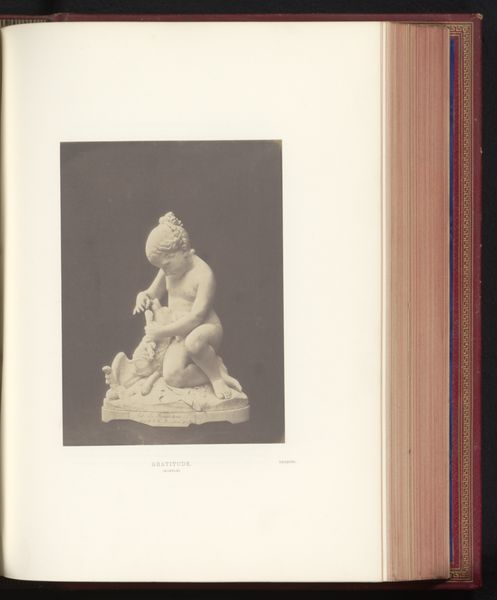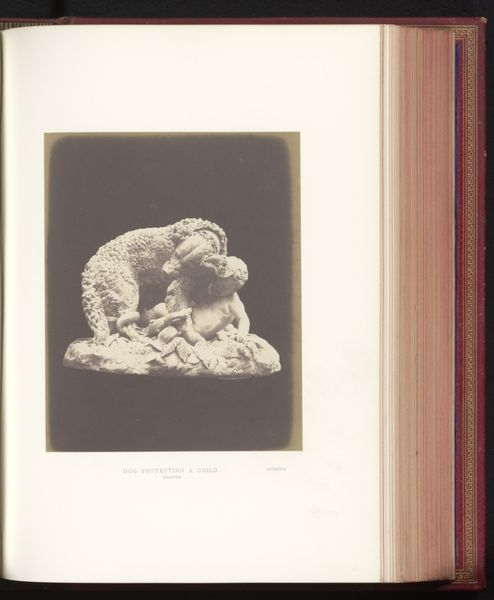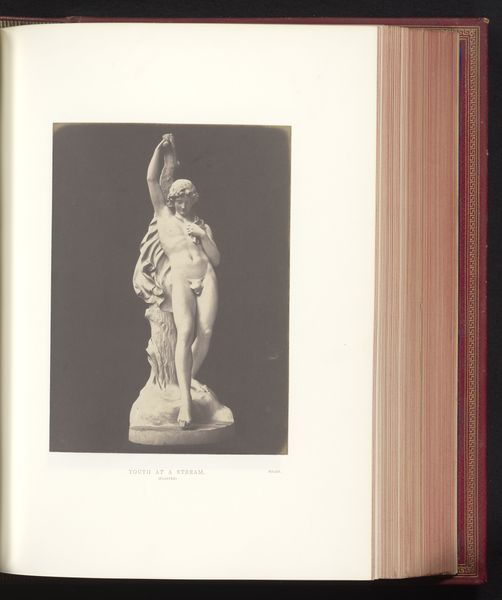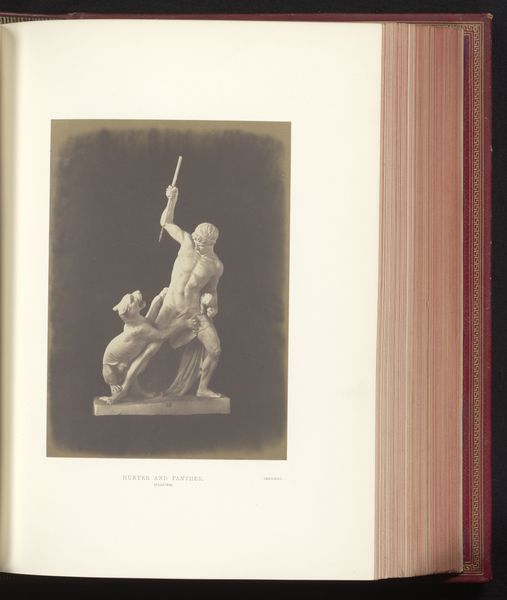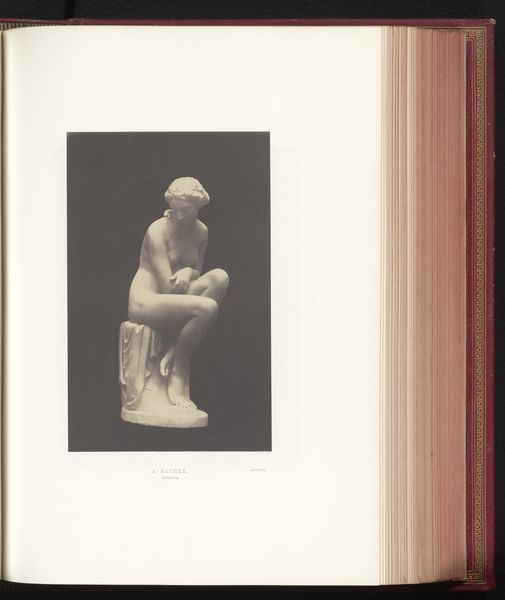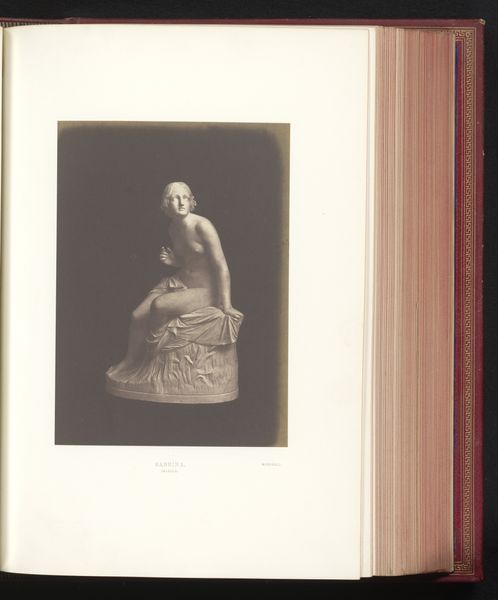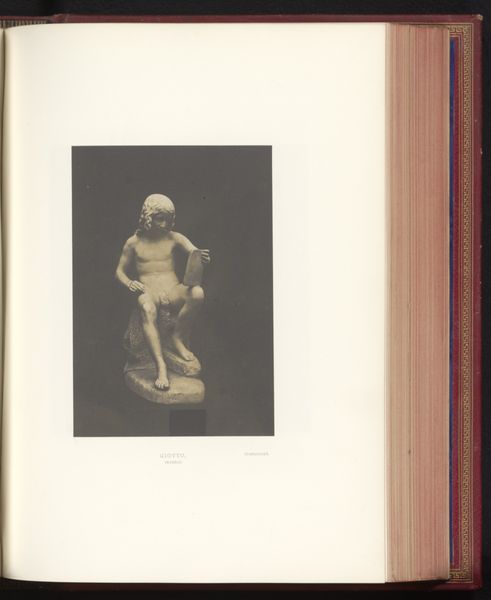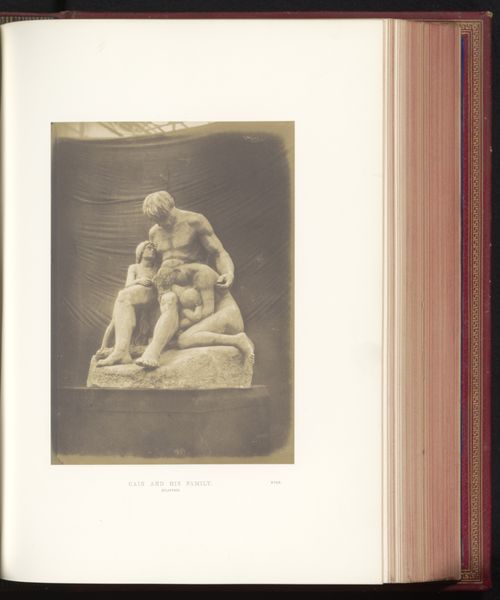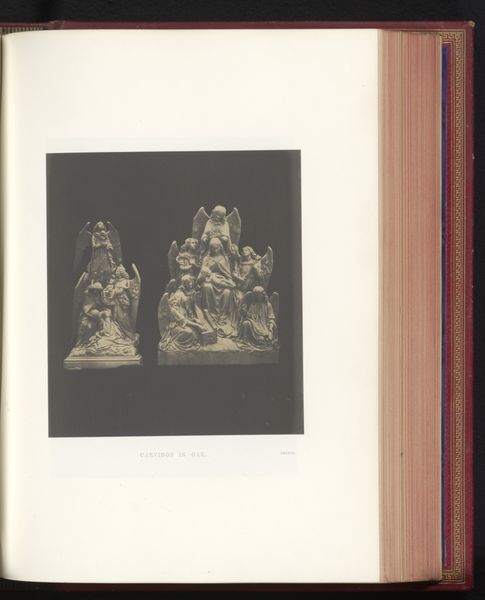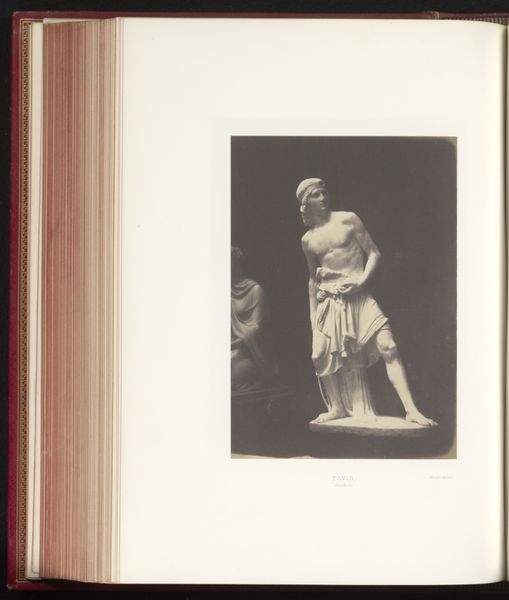
Sculptuur van een hond en een kind door Auguste Jean Baptiste Lechesne, tentoongesteld op de Great Exhibition of the Works of Industry of All Nations van 1851 in Londen 1851
0:00
0:00
#
photo of handprinted image
#
toned paper
#
water colours
#
ink paper printed
#
carved into stone
#
stoneware
#
watercolour bleed
#
watercolour illustration
#
pencil art
#
watercolor
Dimensions: height 200 mm, width 154 mm
Copyright: Rijks Museum: Open Domain
This photograph captures Auguste Jean Baptiste Lechesne's sculpture of a child and a dog, displayed at the Great Exhibition of 1851 in London. The sculpture presents an idealized, sentimental vision of childhood and domesticity, reflective of Victorian-era values. The figures of the child and dog are entwined in an embrace, symbolizing loyalty and protection. Representations like these often glossed over the harsh realities of the Industrial Revolution, especially regarding child labor and social inequalities. Instead, they promoted a narrative of innocence and familial harmony, yet often remained inaccessible to the working classes due to economic constraints. Such pieces encouraged emotional connections with art, fostering a sense of shared cultural values. The sculpture serves as a potent reminder of how art can both reflect and shape societal ideals, inviting us to consider whose stories are told and whose are left out.
Comments
No comments
Be the first to comment and join the conversation on the ultimate creative platform.

